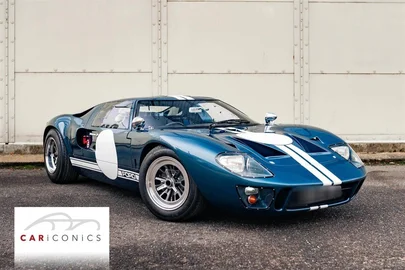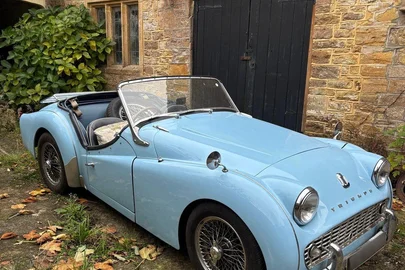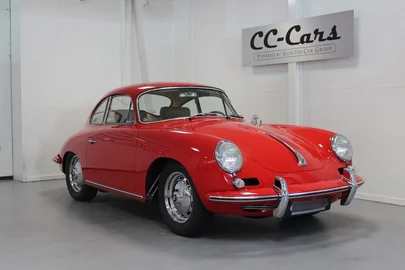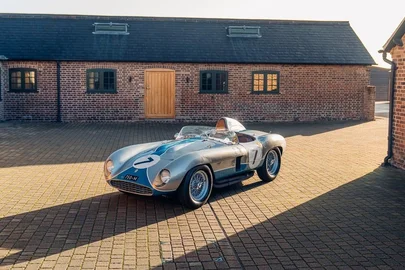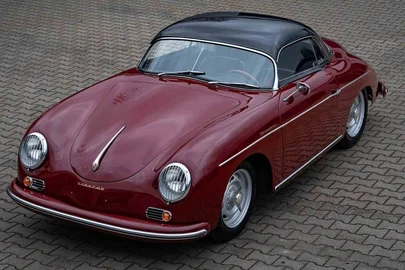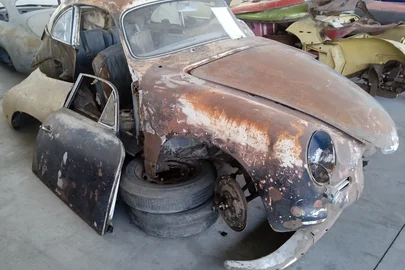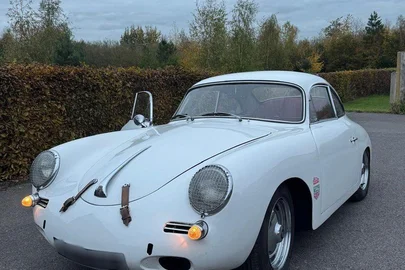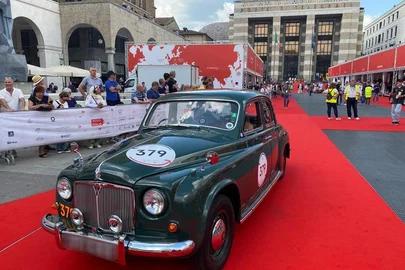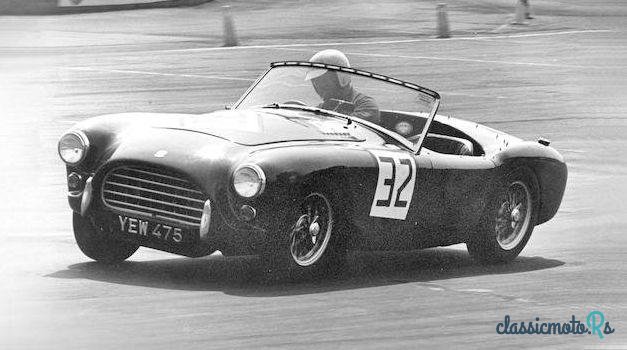
1959' AC Ace
Пожаловаться!Оценить!Запомнить это
Возможен торгОпубликовано 7 мая 2020ID: vF45TT
Истекло
5 лет, 8 месяцев назад
5 лет, 8 месяцев назад
Information from the owner
Кузов: Спорткар
Возраст: 61 год
Цвет: Белый
Комментарии продавца про 1959' AC Ace
1959 AC ACE-BRISTOL ROADSTER
REGISTRATION NO. YEW475
CHASSIS NO. BE1038
*A landmark sports car in its most desirable specification
*Original engine and registration number
*Curved windscreen model
*Period Goodwood, Silverstone, Crystal Palace, Snetterton and Mallory Park entrant
*FIA papers
*Comprehensive history file
Footnotes
"Of them all, the Ace was the truest sports car: it could be used for daily commuting or for high-speed long-distance touring, but it could also be driven to a race meeting, campaigned with distinction, and driven home again - even if that race was the Le Mans 24 Hours." - AC Heritage, Simon Taylor & Peter Burn.
The success of Cliff Davis's Tojeiro sports racer prompted AC Cars to put the design into production in 1954 as the Ace. The Davis car's pretty Ferrari 166-inspired barchetta bodywork was retained, as was John Tojeiro's twin-tube ladder frame chassis and Cooper-influenced all-independent suspension, but the power unit was AC's own venerable, 2.0-litre, long-stroke six. This overhead-camshaft engine originated in 1919 and with a modest 80bhp (later 100bhp) on tap, endowed the Ace with respectable, if not outstanding, performance.
In 1955 AC added a hardtop version - the fastback-styled Aceca - and both models became available from '56 with the more-powerful (up to 130bhp) Bristol six-cylinder engine. The 1,971cc Bristol six was based on that of the pre-war BMW 328, which featured an ingenious cylinder head, designed by Rudolf Schleicher, incorporating hemispherical combustion chambers and inclined valves without recourse to overhead, or twin, camshafts. Instead, the earlier BMW Type 319 engine's single block-mounted camshaft and pushrod valve actuation were retained, thus avoiding an expensive redesign. Two rocker shafts were employed, one situated above each bank of valves, giving the engine an external appearance almost indistinguishable from that of a twin-overhead-cam design. Downdraft inlet ports contributed to the motor's deep breathing, and its tune-ability made it a popular choice for British racing car constructors, most notably Cooper, during the 1950s. Externally, Bristol's clone of the BMW motor differed little from the German original, the most obvious difference being the adoption of SU, rather than Solex, carburettors part way through production. The most significant changes made by the Bristol designers were metallurgical, their utilisation of the highest quality materials contributing to greatly increased engine life.
The combination of a fine-handling chassis and a decent power-to-weight ratio - in Bristol-engined form the car could touch 120mph - helped the Ace to numerous successes in production sports car racing, arguably its finest achievement being a first-in-class and seventh overall finish at Le Mans in 1959. Indeed, its basic soundness and versatility were reflected in the fact that relatively few major changes were found necessary when the Ace was endowed with Ford V8 power to create the legendary Cobra.
Towards the end of production the Ace was also available with the 2.6-litre overhead-valve Ford Zephyr engine installed. Only 223 cars were delivered with the 2.0-litre AC engine compared with 463 Bristol-engined cars and a further 37 Ford-powered examples.
The AC Ace-Bristol offered here, chassis number 'BE 1038' was first registered as 'YEW 475' on 15th April 1959 to its first owner, John Fellowes, Lord de Ramsey of Huntingdon, having been supplied by Herbert Robinson Ltd of Cambridge. It is an original right-hand drive car that retains its original Bristol 100D2 engine (number '100D2 840'). It is also one of the rare examples fitted from new with a curved windscreen. Four years later the Ace was bought by Farnham-based Neil McNab who, together with his racing partner John Nicholson, actively campaigned the car under the Farnborough Racing Enterprises banner.
'YEW 475' was enthusiastically run throughout the 1963 and '64 seasons, and numerous photographs in the comprehensive history file show the Ace being raced at Goodwood, Silverstone, Crystal Palace, Snetterton and Mallory Park finished in white livery. The original green logbook shows ownership changes in 1964 and '66 before the Ace was acquired in October 1973 by Peter Mann, who had it painted red. He returned the car to the track in 1974 and enjoyed many seasons of racing. For the next ten years the Ace was owned by the highly respected motoring enthusiast and racing driver Neil Corner, in whose stewardship the Guards Red livery was repainted and the original engine completely rebuilt by leading Bristol engine specialist, Ian Nuttal.
In September 2017 the AC was sent to respected specialists Stanton Motorsport where it was fully serviced; the carburettors stripped, cleaned and set up; the fuel tank flushed; the rear brakes overhauled; the steering idler rebuilt; and a new battery fitted. More recently the Ace has been in a private collection and is now ready to be raced, rallied, toured and enjoyed by the fortunate next owner.
The car comes with a fabulous history file including many wonderful photographs and programmes from its racing career in the 1960s; letters from previous owners; the aforementioned logbook; the original 1959 tax disc and others dating back over 30 years; the original owner's instruction book; FIA papers; and numerous invoices and MoTs.
A classic of sports car design in its most desirable form, with the Bristol engine and overdrive transmission, this extensively campaigned and well documented AC Ace is worthy of the closest inspection.
REGISTRATION NO. YEW475
CHASSIS NO. BE1038
*A landmark sports car in its most desirable specification
*Original engine and registration number
*Curved windscreen model
*Period Goodwood, Silverstone, Crystal Palace, Snetterton and Mallory Park entrant
*FIA papers
*Comprehensive history file
Footnotes
"Of them all, the Ace was the truest sports car: it could be used for daily commuting or for high-speed long-distance touring, but it could also be driven to a race meeting, campaigned with distinction, and driven home again - even if that race was the Le Mans 24 Hours." - AC Heritage, Simon Taylor & Peter Burn.
The success of Cliff Davis's Tojeiro sports racer prompted AC Cars to put the design into production in 1954 as the Ace. The Davis car's pretty Ferrari 166-inspired barchetta bodywork was retained, as was John Tojeiro's twin-tube ladder frame chassis and Cooper-influenced all-independent suspension, but the power unit was AC's own venerable, 2.0-litre, long-stroke six. This overhead-camshaft engine originated in 1919 and with a modest 80bhp (later 100bhp) on tap, endowed the Ace with respectable, if not outstanding, performance.
In 1955 AC added a hardtop version - the fastback-styled Aceca - and both models became available from '56 with the more-powerful (up to 130bhp) Bristol six-cylinder engine. The 1,971cc Bristol six was based on that of the pre-war BMW 328, which featured an ingenious cylinder head, designed by Rudolf Schleicher, incorporating hemispherical combustion chambers and inclined valves without recourse to overhead, or twin, camshafts. Instead, the earlier BMW Type 319 engine's single block-mounted camshaft and pushrod valve actuation were retained, thus avoiding an expensive redesign. Two rocker shafts were employed, one situated above each bank of valves, giving the engine an external appearance almost indistinguishable from that of a twin-overhead-cam design. Downdraft inlet ports contributed to the motor's deep breathing, and its tune-ability made it a popular choice for British racing car constructors, most notably Cooper, during the 1950s. Externally, Bristol's clone of the BMW motor differed little from the German original, the most obvious difference being the adoption of SU, rather than Solex, carburettors part way through production. The most significant changes made by the Bristol designers were metallurgical, their utilisation of the highest quality materials contributing to greatly increased engine life.
The combination of a fine-handling chassis and a decent power-to-weight ratio - in Bristol-engined form the car could touch 120mph - helped the Ace to numerous successes in production sports car racing, arguably its finest achievement being a first-in-class and seventh overall finish at Le Mans in 1959. Indeed, its basic soundness and versatility were reflected in the fact that relatively few major changes were found necessary when the Ace was endowed with Ford V8 power to create the legendary Cobra.
Towards the end of production the Ace was also available with the 2.6-litre overhead-valve Ford Zephyr engine installed. Only 223 cars were delivered with the 2.0-litre AC engine compared with 463 Bristol-engined cars and a further 37 Ford-powered examples.
The AC Ace-Bristol offered here, chassis number 'BE 1038' was first registered as 'YEW 475' on 15th April 1959 to its first owner, John Fellowes, Lord de Ramsey of Huntingdon, having been supplied by Herbert Robinson Ltd of Cambridge. It is an original right-hand drive car that retains its original Bristol 100D2 engine (number '100D2 840'). It is also one of the rare examples fitted from new with a curved windscreen. Four years later the Ace was bought by Farnham-based Neil McNab who, together with his racing partner John Nicholson, actively campaigned the car under the Farnborough Racing Enterprises banner.
'YEW 475' was enthusiastically run throughout the 1963 and '64 seasons, and numerous photographs in the comprehensive history file show the Ace being raced at Goodwood, Silverstone, Crystal Palace, Snetterton and Mallory Park finished in white livery. The original green logbook shows ownership changes in 1964 and '66 before the Ace was acquired in October 1973 by Peter Mann, who had it painted red. He returned the car to the track in 1974 and enjoyed many seasons of racing. For the next ten years the Ace was owned by the highly respected motoring enthusiast and racing driver Neil Corner, in whose stewardship the Guards Red livery was repainted and the original engine completely rebuilt by leading Bristol engine specialist, Ian Nuttal.
In September 2017 the AC was sent to respected specialists Stanton Motorsport where it was fully serviced; the carburettors stripped, cleaned and set up; the fuel tank flushed; the rear brakes overhauled; the steering idler rebuilt; and a new battery fitted. More recently the Ace has been in a private collection and is now ready to be raced, rallied, toured and enjoyed by the fortunate next owner.
The car comes with a fabulous history file including many wonderful photographs and programmes from its racing career in the 1960s; letters from previous owners; the aforementioned logbook; the original 1959 tax disc and others dating back over 30 years; the original owner's instruction book; FIA papers; and numerous invoices and MoTs.
A classic of sports car design in its most desirable form, with the Bristol engine and overdrive transmission, this extensively campaigned and well documented AC Ace is worthy of the closest inspection.
